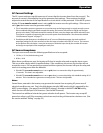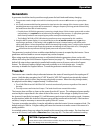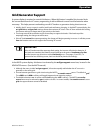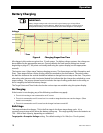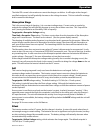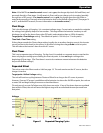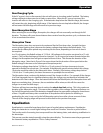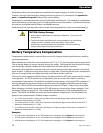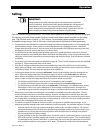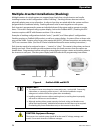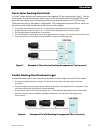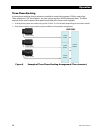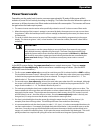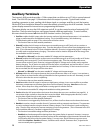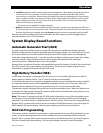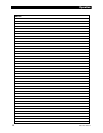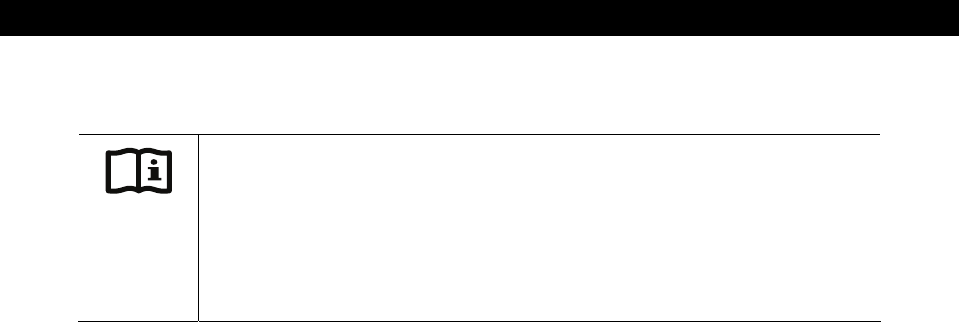
Operation
900-0114-01-00 Rev A 23
Selling
IMPORTANT:
Selling power to the utility company requires the authorization of the local
electric jurisdiction. How the local utility company handles this will depend on
their policies on this issue. Some may pay for power sold; others may issue
credit. Some policies may prohibit the use of this mode. Please check with the
utility company and obtain their permission before using this mode.
The GFX inverters are grid-interactive. This means that in addition to using power from the utility grid
for charging and loads, these models can also convert excess battery power and sell it to the utility
grid. This is known as the “grid-tie” or “Sell” feature. Excess battery power usually comes from
renewable energy sources, such as PV arrays, micro-hydroelectric turbines, and wind generators.
The operation of the Sell feature is referenced heavily in the Battery Charging section, as it is integrally tied
with the battery charger. In fact, selling is occasionally referred to as “charging in reverse”. Where the
charger draws power from the AC input and puts it into the batteries, the Sell feature removes power from
the batteries (or the DC system) and returns it to the AC input.
The Sell feature can only operate while the utility grid power is stable and within certain limits. If the AC
voltage or frequency vary outside these limits, the inverter will stop selling. It may not disconnect from the
utility grid. If the inverter stops selling, the system display will show the reason. Stop Sell Reasons are listed
on page 39.
The inv
e
rter’s grid-interactive limits are specified on page 46. The AC source acceptance limits are specified
on page 15. These numbers are often not the same.
Once
the AC voltage and frequency become acceptable, the inverter has a minimum one-minute delay
before selling will begin. Upon initial connection to the utility grid, the inverter may be required to perform
a full battery charge. This may delay the operation of the sell feature.
In the system display, the key set point is
sell re volts.
(See the system display manual to change this set
point.) When the charger enters the Sell stage (see pages 18 and 19), it uses
sell re vo
lts
as a reference
point. When a renewable source of energy raises the batteries above this set point, the inverter exports
power in order to bring the voltage back down or to prevent it from rising further.
The Sell feature only functions when excess DC (renewable) power is available.
The inverter itself cannot import AC power to raise the batteries to the sell re volts set point.
The Sell feature can use other set points than sell re volts. If the charger is in a different stage, such as
Absorption or Float, it can use the Absorption or Float voltage as reference points. As long as the
renewable energy exceeds the voltage for that stage, it can sell exactly the same way as noted above.
When power is returned to the utility grid, it is possible to completely reverse the utility meter. The net
result would be to sell power to the utility company. However, this depends on whether there are other
loads in the system. Loads on the main panel (not on the inverter’s output) may consume this power as fast
as it is generated, preventing the meter from running backwards. In this case, the result of selling would be
to reduce the consumption of AC power, not reverse it.
The maximum amount of power an inverter can sell is not equal to its specified output wattage. It can
exceed the specified wattage under some conditions, usually temporarily. (Its maximum output is 30 amps.)
However, output will vary with inverter temperature, battery type, and other conditions. The inverter
should not be expected to sell 100% of its specified output wattage continuously. Even though it may
be able to do so, this may leave it too hot to perform other functions (such as starting heavy loads if
they are needed during a utility outage).
A good guideline is that the renewable source should be sized to continuously deliver no more than
85% of the inverter’s specified wattage (per inverter, in a multi-inverter system). This recommendation
is specifically for the inverter’s Sell feature. In some cases, the source may be sized larger to account for
environmental conditions or the presence of DC loads. This depends on individual site requirements.



